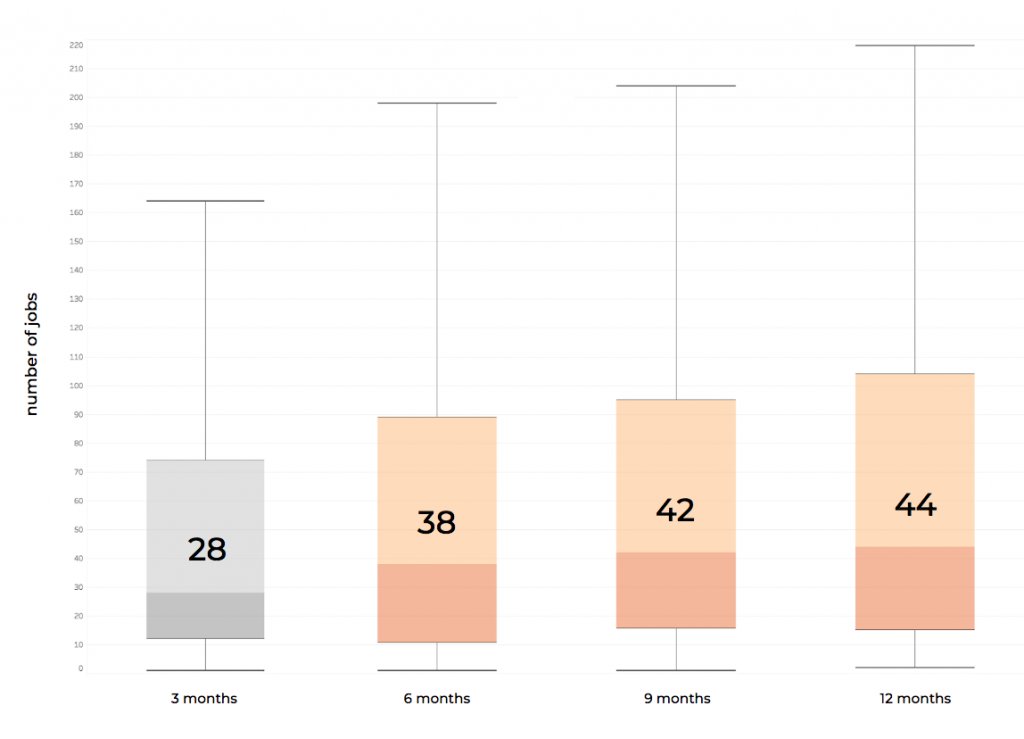It is nearly impossible to make it through a day without encountering an eye-roll-inducing product claim. You know the kind: Younger! Smarter! Healthier! Richer! Marketing language has extended so far into the realm of the preposterous that most of us are immune to it.
But it’s one thing to make a claim, and another thing entirely to back it up with numbers. We here at Knowify have long promised productivity increases—but what does that mean exactly? Is it a soft, wishy-washy claim that you’ll feel more organized and ‘productive’, but mostly business will roll on as usual? Or does it mean a significant change in your business processes in a way that will lead to efficiency, growth, and (hopefully) business transformation? Here’s what the data have to say:
Companies take on 20% more jobs by the end of their first year

Even if we ignore the implementation period—the first 3 months as new Knowify accounts get started—we’ve found that Knowify customers tend to add an additional 20% in job volume by the end of their first year on the platform. That’s a lot! Importantly, we see the same increase no matter where we look: top decile, quartile, or median. Businesses that use Knowify have done very well during this period of construction strength. When we talk about productivity, growth is our objective. The whole point of getting more efficient in the office, more professional in your interactions with clients and counterparties, is so that you can grow your business.
Sure, you could probably take the productivity gains and use them to slightly expand margins— but the best contractors seem to realize that freed up capacity and improved performance insights mean that they can now turn to expanding their businesses. Why rest on your laurels as a profitable $2,000,000 business if you can push toward being a $5,000,000 business? We are very pleased to be a part of our customers’ journey toward that sort of goal!
Analysis details
This analysis has taken into account 104,000 anonymized jobs managed with Knowify over the last 2 years. Combined, these jobs amount to almost $3B in contract value. The study has been performed by Núria Macià, PhD in Data Mining, and Alexandr Kovalev, Computer Science student at Fordham University.